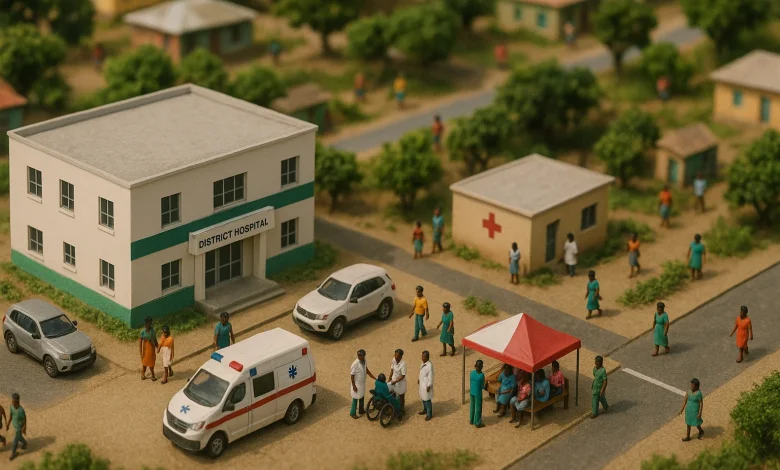District Hospital in Dominica

District hospitals in Dominica serve as the secondary-level care facilities within the health system. They function above primary health centres (Type I, Type II, Type III) and below the national referral hospital, providing inpatient services, surgical capacity, emergency care, diagnostics, and broader clinical services for their catchment districts. Their purpose is to reduce patient loads on the national hospital in Roseau and bring more advanced care closer to rural and coastal populations.
Role & Functions of a District Hospital in Dominica
A district hospital in Dominica typically offers:
- Inpatient wards for general medicine, surgery, obstetrics and gynaecology
- Emergency or Accident & Emergency (A&E) services
- Basic surgical operations and stabilisation
- Diagnostic services: laboratory, imaging, x-ray, ultrasound
- Maternity and neonatal care
- Outpatient speciality clinics (e.g. internal medicine, paediatrics)
- Referral to the national hospital (Dominica China Friendship Hospital) for complex or tertiary cases
They act as referral hubs for Type III health centres and smaller clinics. When a patient’s condition exceeds the hospital’s capacity (e.g., advanced surgery, specialised care), they are transferred to Roseau.
Examples in Dominica
- Portsmouth Hospital (Reginald Fitzroy Armour Hospital) in the northwest region is the primary district hospital serving northern communities. It serves as the anchor hospital for that health district.
- Marigot Hospital, located on the northeast coast, is another district-level hospital. The new hospital was inaugurated around October 2023, replacing what was previously a health centre. It addresses health service gaps in that region.
- The Dominica-China Friendship Hospital (initially Princess Margaret Hospital) in Roseau serves as the national referral hospital, but is sometimes listed as part of the hospital tier above district hospitals.
Significance & Challenges
District hospitals significantly improve access to care by reducing travel time and costs for non-residents of Roseau. They relieve pressure on the national hospital and help decentralise specialised services, such as surgery and obstetrics.
However, challenges remain: staffing shortages (especially specialists), maintaining equipment, supply chain consistency for medicines and diagnostics, and coordinating referrals. Because Dominica is geographically rugged with many remote areas, transport logistics for referrals can be difficult, especially after storms or road damage.
These hospitals are crucial nodes in connecting primary care and tertiary care, reinforcing the health district structure, and improving equity in access to more advanced medical services.




